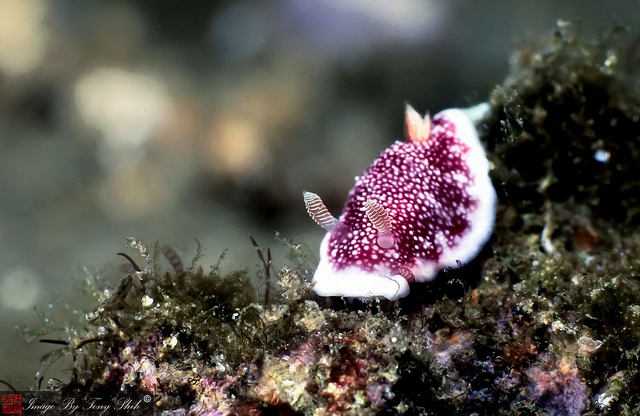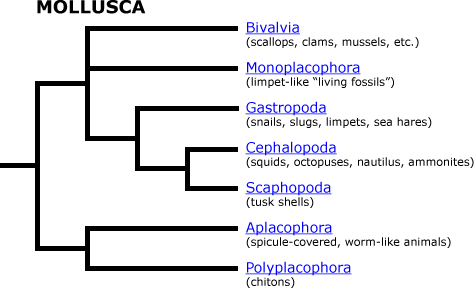Classification

Domain-Eukarya
Kingdom- Animalia
Phylum- Mollusca
Class- Gastropoda
Order- Nudibranchia
Family- Chromodorididae
Genus- Chromodoris
Species- Chromodoris reticulata
The sea slug Chromodoris reticulata fits into the Eukarya domain
because the organism contains cells that hold nuclei (Amils, et. al
2011). Eukarya means a cell that contains a nucleus.
The animal kingdom holds any living organism that is motile, can
reproduce using sexual or asexual reproduction, and consumes other
organisms or their products to live (Nave 2005). Animals do not have thick
cell walls, which separates them from the fungi and plants (Nave
2005). The Chromodoris reticulata is motile, reproduces sexually, consumes
other organisms for energy, and does not have thick-walled cells.
The Mollusca phylum houses the molluscs, which the sea slug belongs
to. The main phylogeny is the coelom; a fluid filled sac encased in
the organism (UCMP). For another example of Mollusca, check out this
cool
spotted sea hare.

Figure 1. Phylogenetic tree of the Mollusca phylum,
depicting relationship to Gastropoda
The characteristic of a gastropod that relate to the sea slug is the
muscular foot used for mobility (UCMP). All gastropods also are able
to undergo torsion, which is the act of manipulating the organism's
own body to bring the posterior end over the anterior end of the
body (UCMP). Gastropods can also be a snail, like the one found
here.
Nudibranchia, which translates to “naked gills”, are a group of
invertebrates(Willan and Coleman 1984). All nudibranchs are
hermaphrodites, and use that as their main way to reproduce with
others, as they never reproduce with themselves (Willan and Coleman
1984). They can be found in all sorts of reef habitats as they are
capable of surviving in various depths (Willan and Coleman 1984).
Nudibranchs are mostly known for their beautifully vibrant color
patterns, which can be used for camouflage, mating, and a warning
signal for predators (Willan and Coleman 1984). This group is the
most diverse and it is also the largest order under the
Opisthobranch group (Willan and Coleman 1984). A nudibranch member
that resembles the bright red colors of the Chromodoris
reticulata can be found
here.
Chromodorididae are a family of the subclass known as the dorids
(Willan and Coleman 1984). The skin of this family is smooth, and
colored bright with varying patterns, and usually ovate shaped
(Willan and Coleman 1984).
Chromodoris reticulata; Chromo means “color”, and doris refers to
the greek myth of a sea nymph (Hunt, J.M), so chromodoris stands for
a colorful sea nymph. Reticulata comes from the latin word
reticulates, which means net-like (Burnham, R.J).
Phylogeny trees
The Chromodoris reticulata has many close relationships with other
sea slugs. The closest linkage is with the Chromodoris splendida
(Johnson and Gosliner 2012). Then, those two sea slugs form a most
recent common ancestor with the Chromodoris albopustulosa (Johnson
and Gosliner 2012). This can be seen on the image included, along
with the ancestry of many other sea slugs.

Figure 2. Circle phylogram with current scientific names given
(Johnson and Gosliner 2012)